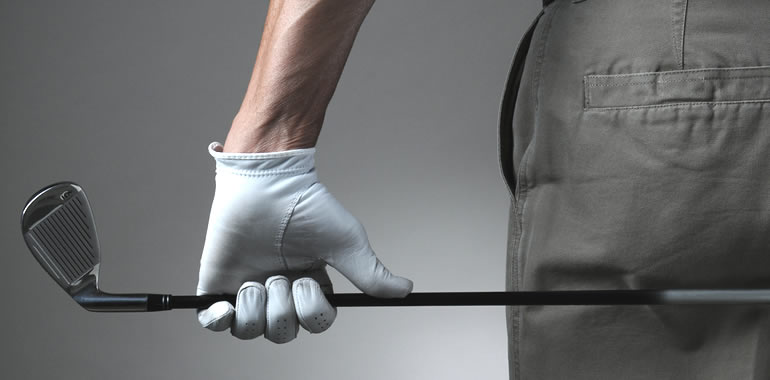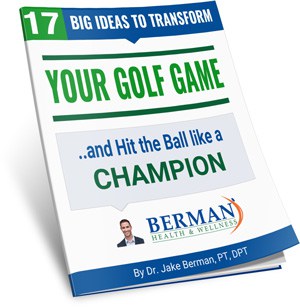
A quick Google search of “how to improve your golf game” will result in endless pages of options ranging from free self help videos to training programs you could spend thousands of dollars on. Results vary from working on your swing technique to mental training to the latest and greatest technology, to working with a golf professional, to diet, and last but not least- exercises.
It can easily be overwhelming and you can quickly get lost going down a “rabbit hole” searching for answers that may work for some but far from a one size fits all remedy. By far the 1st and most common choice amature golfers make is to spend $500-$1000 on new clubs and/or the latest and greatest new driver to hit the market “guaranteed to” do exactly what last year’s model promised (and the year before that… and the year before that… and so on…).
The 2nd most common choice among amature golfers in an attempt to improve their game is to get between 1 and 5 lessons from a golf teaching professional. This in itself becomes an adventure on it’s own because it seems like every golf pro has a unique way they communicate their knowledge and it either resonates with you or you leave frustrated hitting the ball worse than you were before the lesson. I’ve been down this road when I first started out and it was extremely frustrating. You see, by definition, for communication to occur the person you are attempting to communicate with must interpret what you are saying the way you meant it to be interpreted. If that doesn’t happen then technically communication did not occur.
After spending hundreds if not thousands of dollars on new golf clubs and lessons with the pro, the next most common attempt to improve one’s golf game is to spend hours frustrated and sweating, hacking at balls on the driving range. Out of the top 3 most common choices, this
one produces usually by far LEAST ROI (return on investment). This is because we amature golfers are just mere mortals. We are too subjective to be objective. Meaning, 99.9% of the time we think we are doing one thing when we are actually doing something completely different because our perception is our reality. I’ll give you an example-
When was the last time you watched yourself swinging the driver in slow motion? If your handicap is greater than 15 and your answer was more than 6 months ago you should try this. Set your phone up or ask your buddy to video your golf swing in slow motion from behind you (farther away from your target) and from directly across the ball from you. Just to be clear, both of these camera positions are NOT in the line of fire of your shot! Now watch those videos in slow motion on replay.
Did the top of your backswing stop where you thought it would? Did your swing plane match your thoughts? And how about your weight shifting, did that look what you were expecting? Chances are NO; and if you are like me you were pretty disappointed to see that your swing doesn’t actually look like 1990’s Tiger Woods’ swing…
One way I like to think about golf performance or what contributes to your overall golf game is with the 4 pillars concept. The 4 pillars are technical, strategy, mental, and physical. I want you to think of these 4 pillars like 4 tires on a sports car. In order for you to get the most performance out of the sports car you should have equal air pressure in all 4 tires. If one of the 4 tires is significantly lower in air pressure than the other 3 tires, chances are you will NOT get the best performance out of the car. This should be a pretty simple metaphor to get my point across. Now let's go into more detail…
Pillar #1 (in no particular order)- mental:
This is what happens between the ears. This is by far the hardest of the 4 pillars to improve! Have you ever heard of the golf saying “my second golfer is a scratch golfer”?
This is referring to when you make a “horrible” shot and then
immediately drop another ball to prove to yourself (and your buddies) that you are better than that… and that 2nd shot does exactly what you wanted the 1st shot to do! This can be extremely frustrating BUT that’s golf. That 1st shot was horrible because you felt the pressure or you knew what was on the line. Even if you think you have a good mental game, these shots still happen and it can make you want to throw that club right into the water!
Another example of the mental pillar is when you’re standing over a 4 foot putt that you can make 99.9% of the time. This putt is uphill with zero break. All you have to do is accelerate through the ball… but for whatever reason you decelerate! Why? Because you had a dollar on that hole or bragging rights or even worse- the club championship!
The mental pillar is the biggest separation between the pros on the PGA Tour. In general, all the pros on the PGA Tour can hit perfect shots 99.9% of the time, are in shape, and have a history of winning tournaments. But being able to put 4 back to back rounds together consistently time and time again is mostly a mental battle, not physical. Chances are that you’ve golfed with somebody who shot under par while with you and you wondered “why aren’t they on the PGA Tour?” Most likely because of their mental breakdowns. This starts heading towards the saying “drive for show and putt for dough.” Example: putting is usually the biggest difference between somebody with a 5 handicap and somebody shooting scratch. The mental pillar is usually the 2nd to last of the 4 pillars to be worked on by amature golfers trying to improve their golf game…
Pillar #2- technical:
This is referencing your actual swing technique. This is what you pay the golf teaching professionals the big bucks for. This is the 1st thing any new golfer should do before ever attempting to hit a golf ball. “Bad (golf) habits are hard to break once you form them.” This is a saying that is very common in the golfing community and I agree
with this 100%. So please, if you are just starting out, commit to spending at least $1000 and 40 hours on golf lessons. If you don’t you really don’t have a chance- unless you are related to Bubba Watson…
I’ve played many sports growing up and will humbly say that I’ve been at least pretty decent at every sport I’ve attempted. I can simply watch somebody do something and then go reproduce it. At least that was until I tried that with golf! It wasn’t until grad school that I tried hitting a golf ball for the first time. Travis, my roommate at the time and good friend to this day, was a great golfer in high school and went to college on a soccer scholarship so didn’t really play much through undergrad. So when we got into graduate school he was eager to dust off the clubs and get back into the “swing” of things.
I’ll never forget watching Travis on the driving range the first time I finally joined him. He made it look effortless and the ball would be crushed! And the sound it makes, you know that sound when you catch the ball perfectly and you don’t even need to look up for it because you just know that it is going exactly where you wanted it to? I heard that sound with every single shot he made.
So me being me, I grab one of his irons and start whacking! Much to my suprise, it wasn’t even close to effortless for me. After a small bucket of balls I broke a sweat and NONE of those balls did what I wanted them to do! I’m sure most of you reading this can relate…
I knew after that night that if I was really going to pursue golf that I would need to invest some serious time and money into golf lessons. Fast forward to $1000, 20ish lessons, and countless hours of practice- I could finally hit my 8 iron 120 yards in the general direction that I wanted to! I couldn’t hit any other club in the damn bag but I could damn sure hit that 8 iron!
Pillar #3- Strategic:
This is course management and how you set up your equipment. This is by far the easiest of all 4 pillars to improve. This can be as simple as playing the course backwards before you tee off on every hole. For example- if it’s a 340 yard par 4, what club do you want to hit into the green? If you are most confident with your 8 iron and it goes 140 yards, you shouldn’t hit the driver off the tee assuming your driver goes 240 yards or better. You should hit your rescue club assuming it goes 200 yards and have a nice and easy 8 iron shot into the green.
Course management is also taking danger out of the equation. If you know your driver will go 240-250 yards and there is trouble at 260 yards, you should hit the 3-wood and take the danger out of the equation.
The strategic pillar is also how you set up your equipment. I won’t go too much into this as this area is above my paygrade. I do know that it takes into consideration shaft stiffness, club head angles, shaft weights and lengths, grip thickness, etc. Again, the strategic pillar is by far the easiest of all 4 to maximize.
Pillar #4- physical:
This is what your body is actually capable of doing. This is the LEAST worked on pillar of all 4! Said differently, this is the tire with the least amount of tire pressure in it on your sports car. This is looking at how much strength and flexibility you have in relation to the requirements of the golf game (not just the swing!). This is by far the simplest of all 4 pillars to improve BUT again, is usually the last of the 4 to be considered.
The physical pillar is the reason you are reading this right now. I said a line ago that this is the simplest of all 4 pillars to improve but that does not mean the easiest. The strategic pillar is the easiest pillar to maximize. The physical pillar takes actual “hard work” aka exercise
(perfect exercise) to improve and humans, in general, by nature are lazy creatures. Especially the older we get. No joke, I can’t tell you how many times I’ve heard one of my patients use age as an excuse to not work as hard as they could or would have 10 or 20 years earlier. The funny thing is that I’ve heard this excuse from people in their 40’s all the way to 70’s; but ironically I don’t really hear it from my patients in their 80’s and 90’s… I’m not sure why my old patients don’t use that excuse as much...
Anyways, this physical pillar is the most important pillar for increasing distance off the tee AND for longevity. Not just longevity in the golf game but also longevity in life! Seriously, the people with the highest quality of life in their last years of life are the ones who are in better physical shape than the average person their age. For more on this search on Amazon for my 1st book Treating Problems Not Symptoms by Dr. Jake Berman.
But again, improving the physical pillar is NOT easy. It takes hard work, and you can never stop doing it. You can’t put in the time and effort to gain strength and flexibility and then just stop assuming you will maintain those gains. It takes a long time to gain and only days to lose. I know, it’s not fair but it is what it is. The human body is one of the most efficient machines on this planet, if you don’t use it (strength aka muscle mass) you lose it. We will be going over in great detail in the next few weeks exactly how to improve the strength pillar which will contribute to the biggest immediate positive improvement to your golf game so stay tuned!

FREE REPORT
How to Transform Your Golf Game
...and hit the ball like a champion


